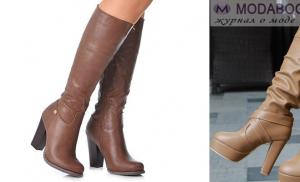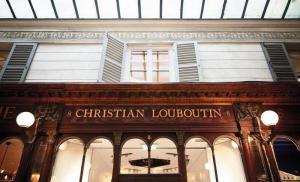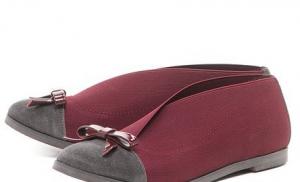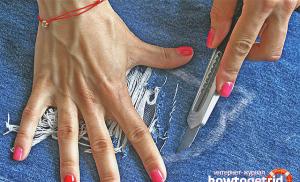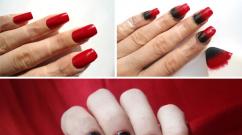Russian folk dresses: photos, costume history and modern interpretations
Today, when almost all clothes are made in China and Turkey, it is difficult to distinguish an American from a Russian, and vice versa. But it was not always so. Even 150-200 years ago, the identity of each nation was emphasized by its outfit. And Russian folk dresses, of course, are no exception. Clothing not only spoke about where a person came from, but could also tell about his social status and position in society. This is especially noticeable in women
Women's clothing for every day
The basis of any outfit was a long shirt. Most often it was white or red. It was decorated with embroidery and pearls. More noble ladies wore another silk shirt over it, called a maid. She was tied up with a wide belt or apron. In this form, a woman could walk at home without putting on anything else. However, when receiving guests, they usually wore other clothes over the shirt.
Here, Russian folk dresses for women living in the north and south differed. So, representatives of the northern peoples put on a sundress over a shirt, which was sleeveless. For its decoration, embroidery, trim, pearls and even precious stones were used. The more noble class a woman belonged to, the more expensive fabric was
In the south, women's clothing was different. Here, instead of a sundress, they preferred to wear a poneva. She resembled a modern skirt, but, unlike her, the poneva was tied around the waist. Poneva was of bright colors and had its own color scheme in different provinces. The Russian folk dress, the photo of which is shown above, was also complemented by an apron, a headdress and decorations around the neck.
Outerwear
Since it is very cold in most of Russia in winter, Russian folk dresses were complemented by outerwear. It was customary for peasant women and city dwellers to wear a quilted jacket over a cloth yard. Usually it was short with a lot of buttons. Such a quilted jacket was trimmed with gold or silver embroidery along the edges.
Noble ladies wore coats sewn from various furs. Their main difference from other similar outfits is long sleeves (up to 10 meters). Slots were made in the right places, where, in fact, the hands were threaded. Less often, a fur coat was worn, collecting sleeves in large folds. In addition, noblewomen could complement their outfit with a fur collar and muff.
For all segments of the population, both a padded jacket and a fur coat were festive clothing. Therefore, for every day they put on a simpler single-row. It was usually made of woolen cloth and had a modest finish. Outwardly, it was a very long coat, almost to the toes, with the same long sleeves. They, like a fur coat, had slits.
holiday clothes
Of course, as now, the clothes for the occasion and for every day were different. This is especially noticeable if we consider Russian folk wedding dresses. They were distinguished from other outfits by a riot of colors and an abundance of decoration. In the old days, it was not customary to marry as this color was a symbol of holiness.

Since representatives of the lower classes could not afford a dress made of expensive fabrics, it was usually sewn from linen. However, they more than compensated for this with fine embroidery, lace and beading. Noble ladies went out in dresses made of brocade, taffeta and even silk. They were also necessarily embroidered and decorated with pearls and precious stones.
The future bride prepared Russian folk dresses for the wedding herself, sometimes doing this for several years. After all, they were supposed to have at least four. Each of them was worn on a specific wedding day. In addition, it was a way to demonstrate to the guests and the family of the future husband the skill of the girl chosen as his wife. And this applied to all classes, not only peasant women.
Clothes by status
It is worth noting that, despite the general similarity of all outfits, the Russian folk dress for a girl and a married woman had significant differences. Status in society was demonstrated with the help of headgear. So, a little girl usually wore a braid into which ribbons were woven. She also decorated the head itself. She was not supposed to have any kokoshniks and other headdresses, except for a scarf in winter.

As soon as the girl reached puberty and became, as they say, marriageable, she tied a ribbon across her head. The ribbon was decorated with embroidery or was plain. In addition, often such girls wore one long braid "in dissolution", not fastening from below. Of course, they periodically untangled: in such a simple way, the girl lured potential suitors.
Married ladies should never leave the house without a headdress. In everyday life, they tied it, but, unlike marriageable girls, it was tied in the back, not in front. At the same time, the braid was tightly braided and fit around the head. Hair was worn over it. On holidays, it was supposed to wear a kokoshnik with a shawl. In winter, a fur hat was worn on the head.

Modern reading
Of course, much of it has long been forgotten and lost. However, a dress in the Russian folk style can be found in the collections of many domestic designers. So, at Igor Gulyaev, Russian motifs are clearly discerned in the silhouettes of modern fur coats. Vyacheslav Zaitsev more than once demonstrated evening dresses in his collections, in which Russian motifs were clearly visible. This applies to both silhouette and finish.
Some designers have gone further and created entire collections in the Russian folk style. For example, Valentina Averyanova managed to breathe new life into national clothes. The collection she demonstrated was not only acclaimed by international fashion critics, but also by ordinary buyers.

Finally
And today there will always be a place for such an outfit as a Russian folk dress. Photos of modern outfits in this style can increasingly be found in fashion glossy magazines. In addition, the style of "folk" is now at the peak of popularity.
